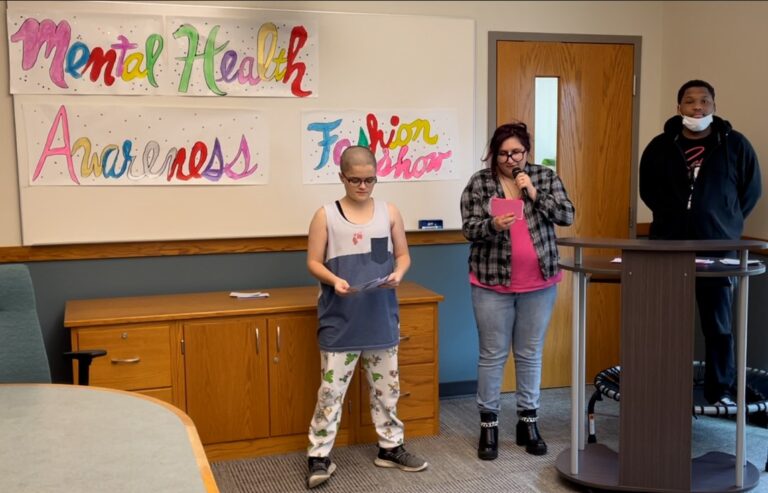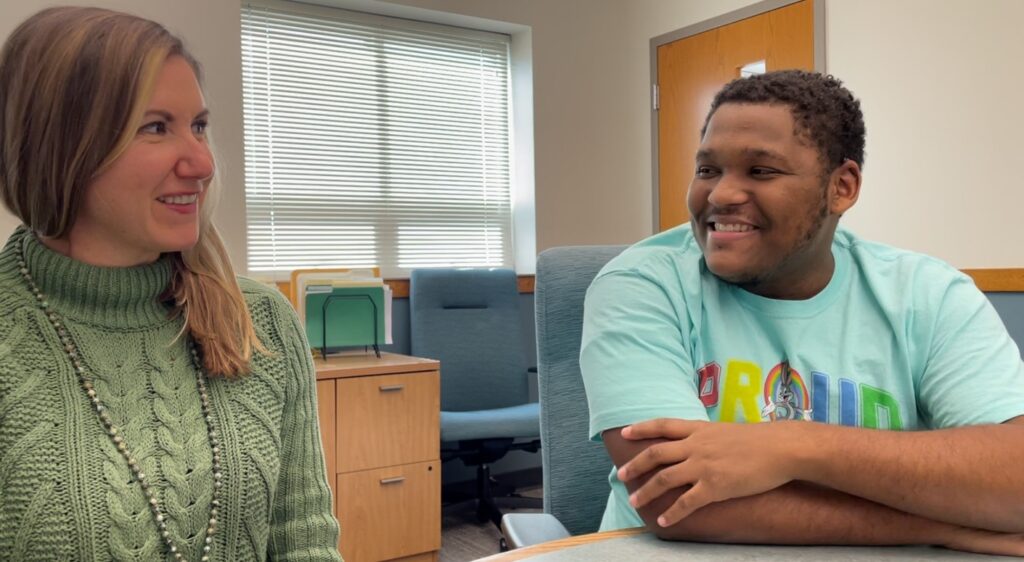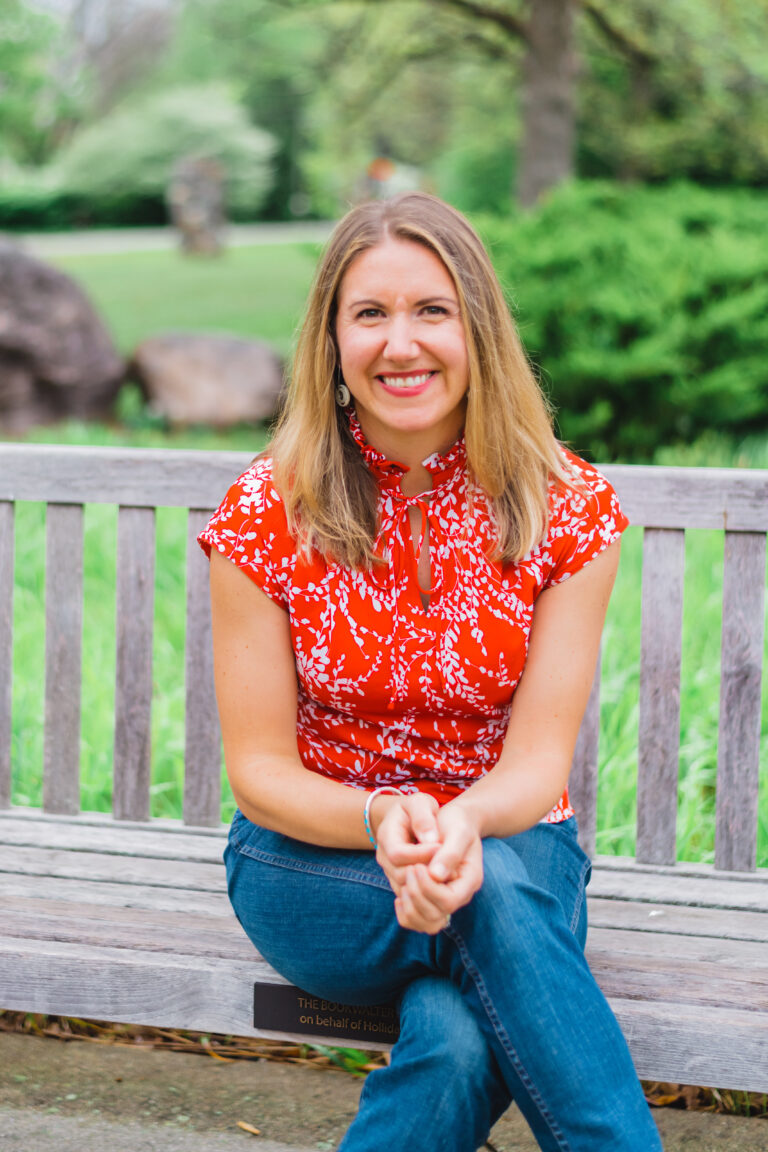About One In Five
We believe in leveraging youth with lived experience to close gaps in affordable and accessible mental health care for their peers.
Our Mission: One In Five improves career and life outcomes for students living with mental health conditions and improves the overall well-being of students in the schools where the program operates.

Over half of youth ages 12-17 are unable to receive care for their diagnosed mental illnesses.
Mental illness impacts a young person’s well-being, educational and employment attainment, and incarceration likelihood. Half of all students who drop out of high school and nearly 70% in the juvenile justice system have a mental health condition.
These challenges disproportionately affect BIPOC youth and LGBTQ+ youth. For example, less than half of BIPOC youth get the mental health care they desire. In addition, 70% of LGBTQ+ youth reported challenges with mental health, and 42% contemplated suicide last year. As such, BIPOC and LGBTQ+ youth are prioritized in this project.
Latino and Black children are twice as likely to experience economic- and health-related impacts due to Covid-19.
People with mental health conditions are 3-7 times more likely to be unemployed than their peers without these challenges. The need to provide targeted career development opportunities for students with mental illness is high.
Over half of youth ages 12-17 are unable to receive care for their diagnosed mental illnesses.
Mental illness impacts a young person’s well-being as well as their educational and employment attainment and likelihood for incarceration. Half of all students who drop out of high school and nearly 70% in the juvenile justice system have a mental health condition.
These challenges disproportionately affect BIPOC youth and LGBTQ+ youth. Less than half of BIPOC youth get mental health care they desire. 70% of LGBTQ+ youth reported challenges with mental health, and 42% contemplated suicide last year. As such, BIPOC and LGBTQ+ youth are prioritized in this project.
Latino and Black children are also twice as likely to experience economic- and health-related impacts due to Covid-19.
People with mental health conditions are 3-7 time more likely to be unemployed than their peers without these challenges The need to provide targeted career development opportunities for students living with mental illness is high.

The U.S. Surgeon General declared a youth mental health crisis in December 2021.
This crisis disproportionately affects youth of color, compounded by inequitable access to behavioral health care. Mental illness impacts a young person’s well-being, educational attainment, and incarceration likelihood. Half of all students who drop out of high school and nearly 70% in the juvenile justice system have a mental health condition.
Youth need better models for mental health care, greater access to it, and expanded career pathways in mental health.
Evidence shows that providing services through school improves the use and access to care. Between 2014-2020, 58% of all adolescents who received services accessed them in an educational setting. 35% of those adolescents received mental health services exclusively from school settings. Most of those who received services exclusively at school were students of color and students living in low-income households.
In a youth survey report published by Mental Health America in 2020, 41% of respondents said support from peers like them would be most helpful in their recovery. Peer-to-peer support includes two or more people with lived experience who support each other through mental illness recovery. While research is emerging about the efficacy of peer-to-peer recovery supports, existing research is promising. Adult peer support workers are positively impacting individuals’ recovery and improving mental health systems. Youth Peer Support is emerging, though it is not as available as adult peer support.
The U.S. Surgeon General declared a youth mental health crisis in December 2021.
This crisis disproportionately affects youth of color, compounded by inequitable access to behavioral health care. Mental illness impacts a young person’s well-being, their educational attainment and likelihood for incarceration. Half of all students who dropout of high school and nearly 70% in the juvenile justice system have a mental health condition.
Youth need better models for mental health care, greater access to it, and expanded career pathways in mental health.
There is evidence that providing services through school improves the use and access of care. Between 2014-2020, 58% of all adolescents who received services accessed them in an educational setting. 35% of those adolescents received their mental health services exclusively from school settings. Most of those who received services exclusively at school were students of color and/or students living in low-income households.
In a youth survey report published by Mental Health America in 2020, 41% of respondents said support from peers like them would be most helpful in their recovery. Peer-to-peer support includes two or more people with lived experience who support each other through mental illness recovery. While research is just emerging about the efficacy of peer-to-peer recovery supports, existing research is promising. Adult peer support workers are positively impacting the recovery of individuals, and also improving mental health systems. Youth Peer Support is emerging, though is not yet as available as adult peer support.

What does One In Five do differently?
The current training available to youth who want to become peer-to-peer mental health support specialists is limited and difficult to find. With rare exceptions, it does not tap into existing school structures. It is unclear whether, where, or when synchronous training happens that allows for practice in cohorts.
One In Five will codify a clear and robust peer support specialist training pathway for Indiana youth living with a mental illness. This programming will work in concert with formal education structures, tapping into existing career and technical education (CTE) programs and funds.
This endeavor provides students with lived mental illness experience a viable career pathway, a group of people who are 3 to 7 times more likely to be unemployed than those with no disorders. The need to provide targeted opportunities for students living with mental illness is high.
Career and Technical Education provides invaluable opportunities for real-world application. In this case, the real-world application fulfills a real need. In the state of Indiana, over half of youth ages 12-17 with major depression do not receive treatment for their mental illness, a trend consistent across the nation.
School-based care improves access. In a recent 3-year study, 58% of all adolescents who received mental health services accessed them in an educational setting, 35% exclusively at school. Most were students of color and/or living in low-income households. One In Five will not only improve career pathways for students living with mental illness, but also the overall well-being of students in the schools in which it operates.
There is a burgeoning field of training and certification for peer support specialists. In August 2020, Indiana Governor Holcomb announced funding to expand the pool of peer support professionals through the Indiana Recovery Network. What if schools or school-adjacent programs offered routes for youth peer support specialist certification? Approaching peer-to-peer support training as career and technical education (CTE) can be a viable way to do this. These programs can fill gaps in affordable and accessible care for youth impacted by severe mental illness. Rising peer support specialists would be empowered through pathways to advanced education and potential employment.
This project seeks to expand support for youth living with mental health conditions, specifically middle and high school students. As previously mentioned, youth with severe mental health conditions are disproportionately likely to drop out of high school or encounter the juvenile justice system. Several factors are compounding this phenomenon. The social isolation and stress associated with the COVID-19 pandemic have exacerbated youth mental health challenges disproportionately affecting girls (57% vs. 38% of boys), LGBTQ+ (70%) individuals, and BIPOC (Black, Indigenous, People of Color) youth. As such, youth of color, girls, and LGBTQ+ youth will be prioritized in this project.
To learn more about how One In Five can make a positive impact on your school and community, contact us today.
One In Five & Peer Support Training
The current training available to youth who want to become peer-to-peer mental health support specialists is limited and difficult to find. With rare exceptions, it does not tap into existing school structures. In addition, it is still being determined whether, where, or when synchronous training allows for practice in cohorts.
One In Five will codify a clear and robust peer support specialist training pathway for Indiana youth living with a mental illness. This programming will work in concert with formal education structures, tapping into existing career and technical education (CTE) programs and funds.
This endeavor provides students with lived mental illness experience a viable career pathway, a group of people who are 3 to 7 times more likely to be unemployed than those with no disorders. The need to provide targeted opportunities for students living with mental illness is high.
Career and Technical Education provides invaluable opportunities for real-world application. In this case, the real-world application fulfills a real need. In Indiana, over half of youth ages 12-17 with major depression do not receive treatment for their mental illness, a trend consistent across the nation.
School-based care improves access. In a recent 3-year study, 58% of all adolescents who received mental health services accessed them in an educational setting, 35% exclusively at school. Most were students of color and/or living in low-income households. One In Five will improve career pathways for students living with mental illness and the overall well-being of students in the schools in which it operates.
There is a burgeoning field of training and certification for peer support specialists. In August 2020, Indiana Governor Holcomb announced funding to expand the pool of peer support professionals through the Indiana Recovery Network. What if schools or school-adjacent programs offered routes for youth peer support specialist certification? Approaching peer-to-peer support training as a career and technical education (CTE) can be a viable way to do this. These programs can fill gaps in affordable and accessible care for youth with severe mental illness. Rising peer support specialists would be empowered through pathways to advanced education and potential employment.
This project seeks to expand support for youth living with mental health conditions, specifically middle and high school students. As previously mentioned, youth with severe mental health conditions are disproportionately likely to drop out of high school or encounter the juvenile justice system. Several factors are compounding this phenomenon. First, the social isolation and stress associated with the COVID-19 pandemic have exacerbated youth mental health challenges, disproportionately affecting girls (57% vs. 38% of boys), LGBTQ+ (70%) individuals, and BIPOC (Black, Indigenous, People of Color) youth. As such, youth of color, girls, and LGBTQ+ youth will be prioritized in this project.
If you want to learn more about how One In Five can positively impact your school and community, contact us today.
About Nicole
I live with bipolar disorder. It is inextricably linked to who I am as a leader. When I was 15, I spent two months in a psychiatric hospital. Upon my return, I immediately noticed that people’s expectations of me plummeted. I also noticed all the other groups of students for whom adults’ expectations did not match their potential.
I wondered why the percentage of Black students in my advanced classes did not match the school’s student body or why students in the English as a Second Language program had limited physical and metaphorical mobility. I wished for all students to experience what it feels like to have teachers and other adults believe they could do something remarkable. This conviction led me to become an educator who would elevate the expectations of marginalized groups of students, and now especially for youth with lived mental illness experience.



Hi, I'm Nicole Beeman-Cadwallader, Ph. D. Founder and Managing Director of One In Five.
I live with bipolar disorder. It is inextricably linked to who I am as a leader. When I was 15, I spent two months in a psychiatric hospital. Upon my return, I immediately noticed that people’s expectations of me plummeted. I also noticed all the other groups of students for whom adults’ expectations did not match their potential.
I wondered why the percentage of Black students in my advanced classes did not match the school’s student body, or that students in the English as a Second Language program had limited mobility, both physically and metaphorically? I wished for all students to experience what it feels like to have teachers and other adults believe that they could do something remarkable. This conviction led me to become an educator who would elevate the expectations of marginalized groups of students, and now especially for youth with lived mental illness experience.






